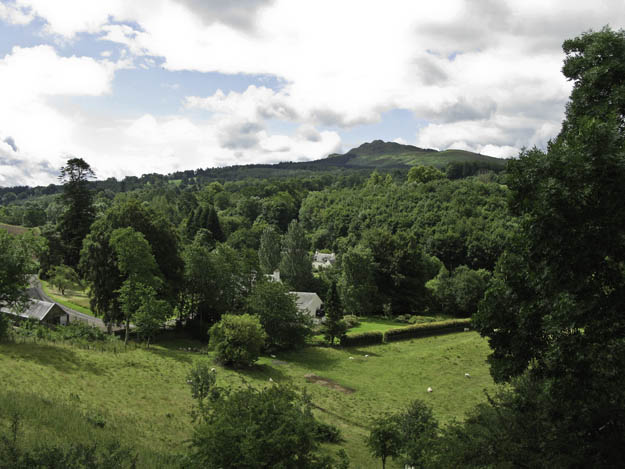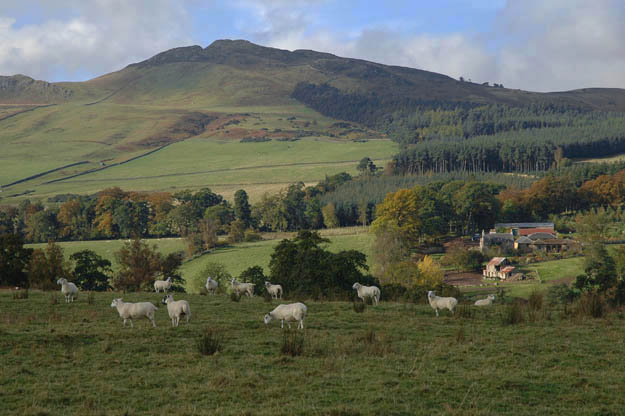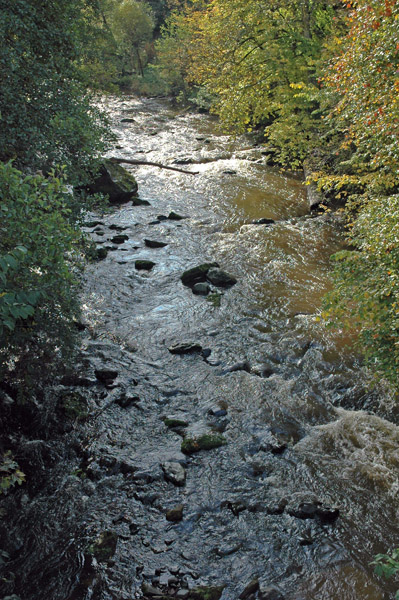

by Norman Turnbull
Turnbull Clan High Shenachie
Have you ever thought what the meaning of a name is and what it can mean to you? I never gave it much thought myself, until a few years ago, when I received a letter through my door. It was an invitation to attend a gathering of the Clan Turnbull at a small village called Denholm, just outside Hawick. It was here that I met up with other people with the Turnbull name. This started my curiosity. I made up my mind there and then that I wanted to find out more about my self and where I came from, so I joined the Turnbull Clan Association.
In my lifetime, I have travelled to many places but never settled until I returned to the borders where, for once, I felt at peace with my self. Not knowing why this should be, I took up employment, as a hill shepherd, on Harwood Estate, (the home of one of the Elliot family.) Harwood Estate was, at one time part of Turnbull land, which we will talk about later.
It soon became clear to me why I was experiencing this feeling of peacefulness. I was back living and working, in the shadows of Rubberslaw, the home of my ancestors. This in it self, made me even more determined to find out more about my self. Where did the name Turnbull come from and how did it come about. We have all heard the story of a young man who saved the life of Robert the Bruce, called Will-o-Rule, and how Robert the Bruce changed his name to Turn-E-Bull, hence the name changed to Turnbull.

Now, this young man, Will-o-Rule, had to have family, so where did they come from, what was their ancestral history. With this question in my mind I decided to take my self back in time, back into the dark days of Scottish history.
The Beginning of the Turnbull Trails
Rule to Turnbull
The name of Rule is of quite ancient origin in the border counties of Scotland and in the north of England. It first appears in the fourth century when St. Regulus or St. Rule arrived on the shores of Scotland at what is now St. Andrews in Fife. (There is another possibility which has been put forward that the family may have descended from Richard De Rollo, also known as Richard De Rule, who apparently came to the British Isles about the time of William the Conqueror. This individual came from Normandy and is said to be a descendent of Rollo of Norway (860-932).) At any rate, he was given extensive grants of lands and property in Scotland and England. Still, the first authentic records of the name appear about 1128 when persons named Adam Roule, Richard Roule, Hugo Roule, William Roule and John Roule are noted in the Scottish Borders in the county of Roxburgh.
There is an area in the south central part of Roxburghshire that is known as the Valley of the Rule. This valley contains a small river called Rule Water, and there are several little community’s along its course that bear, in part, the name of Rule, such as Bedrule, Abbotsrule, Hallrule, Town of Rule, and more.
Also from this valley comes the branch of the Rule Family whose name is now Turnbull. As the story is told, in the history of Selkirkshire, a William Rule, who was a giant of a man , was on one occasion (about 1315) on a hunting trip with King Robert the Bruce when he, the king, was attacked by a wild bison or bull. Grasping it by it’s horns, he turned its head to one side and killed it. He was given the name of “Turn-E-Bull” by King Robert and from him has descended a quite extensive family. This story is referred to in the register of the great seal of Scotland. Leyden describes the incident in verve as follows.
“On Scotia’s lord he rush’d with lightning speed,
Bent his strong neck to toss the startled steed,
His arms robust the hardy hunter flung around his
Bending horns, and upward wrung with withering force.
His neck retorted round and roll’d the monster on the
Ground’ crushed with enormous strength his bony skull
And courtiers hail’d the man who ‘turned the bull’.”

Hector Boece, in his wars of Scottish Independence, states that King Robert the Bruce, rewarded William with the lands of Philiphaugh, now part of Selkirk, and dubbed Rule “Turnebull” (the “e” was later dropped from the name). The lands that the Turnbull’s came from was settled by Vikings in the 10th and 11th Centuries, giving the Turnbull’s a very Norse look and being reported to be of great size, with many having blonde and red hair and striking blue eyes. Because of their open defiance to the English Crown, many Turnbull’s changed into Trumbull, Tremble, Trimble and Trembley (many went to France to continue fighting the English), and some went to Northern Ireland (where many still are today, including the President of N. Ireland), America, Canada and Australia.
Despite the desputes over the origin of the Turnbull name, historians agree that Robert the Bruce awarded the lands of Philiphaugh to William Turnbull.
William Turnebull assumed a bull’s head as his heraldic symbol with the motto, “I Saved The King”----- both of which have been incorporated into the Turnbull Clan crest.
The name Turnbull was not recorded before 1315, when William was awarded the lands of Philiphaugh - and following this time, use of the Rule Surname dwindled while use of the Turnebull surname increased. The Turnbulls were to become one of the most turbulent of the Border families.
A Scottish Nobleman, sent to see if the Turnbulls would back their claim to the throne, reported back that they had no care at all for politicians but always yearned for a fight anytime.
